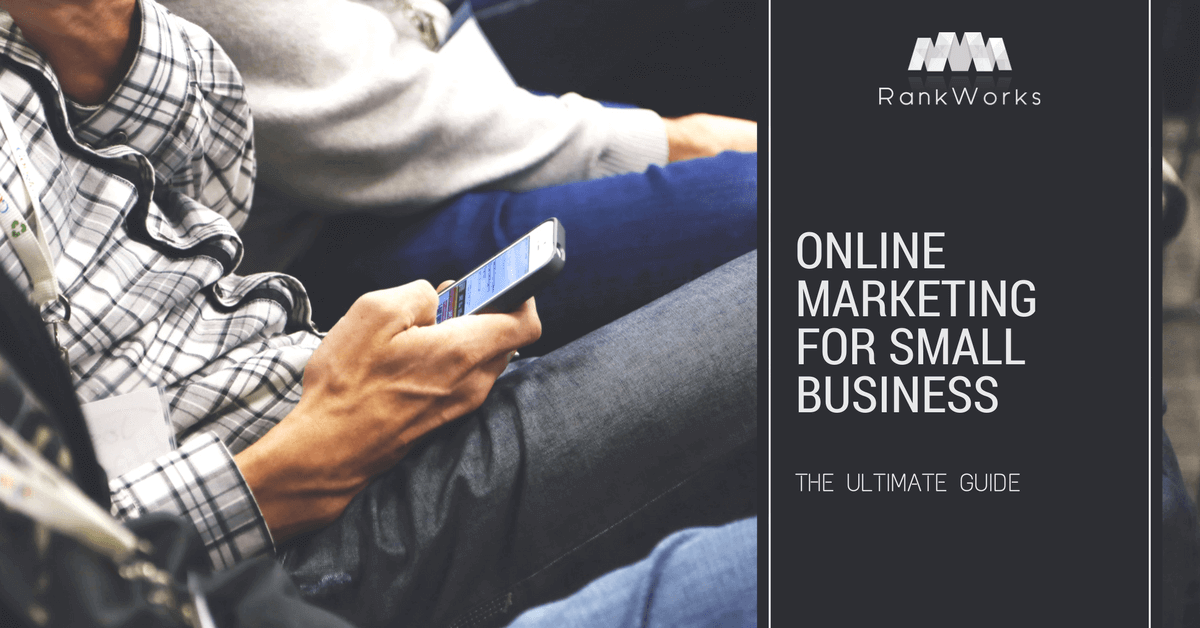There are countless ways to market your small business, both digitally and traditionally. It can be a daunting task navigating the marketing world and coming up with ideas, optimizing and investing to find out which ones bring you the best results and help you achieve your business goals.
Regardless of the type of business you’re running – e-commerce store or brick-and-mortar one, it’s high time to face the fact that your customers turn to the Internet for everything – from product research to location and operating hours.
Having that said, in the text below, we compiled the selection of proven online strategies and marketing platforms that will help you to:
- Raise brand awareness
- Attract new leads
- Convert them to long-term clients
- Ensure the on-going cash flow
While there is no formula that will guarantee your marketing success, we put together all the lessons learned through our own experience to save your precious time, and, of course, marketing investments.
Website
Consider how much the Internet and technology has affected our everyday lives in the last 10 to 15 years: smart phones, tablets, Google, Amazon, and so on. It’s a different world. You may have been doing just fine without a website or with an old, poorly optimized and rarely updated one, but complacency can be deadly. It’s like jumping off a building and halfway down saying, “So far, so good!”
This is how businesses die: they don’t see the need to change until it’s too late. Let’s take a look into the common consequences of not staying up-to-date in a changing world.
You can use free sites and cheap local help to build one, or worse yet – not have a website at all! But consider the fact that every person who sees you online will judge you and your business by what your website looks like. Professional web design doesn’t just affect the way a website looks; it also helps to ensure that everything works as it should.
TO DO:
- Create a website that will represent your business in a best way. Options exist for every budget. If you’re wondering how much you should spend on a web design, how your site should look like and what type of content to add, think about its purposes: to build awareness, to inform, to help you sell.
Your website should be your online sales representative and serve as the face of your company just as much as a live salesperson would be in the real world.
- Give people a reason to contact you, discuss your services/products, and what sets you apart from the competition.
- Give them reasons to visit your website more often, by updating your blog and news section regularly.
- Create a dialogue with your potential customers by enabling them to leave comment, share your blog post and contact you directly.
- Optimize your website for search engines. In a simple, plain English, this means make your website easily found in browsers when your target customers type a keyword related to your business, product and services.
There is a set of methods to get your search engine optimization (SEO) in place, both on technical and content side, but we do recommend to get a professional help to set it up for you and give you advices on how to manage your good rankings.
PRO TIP: Download our FREE Step-by step guide on how to get your business online and in front of your customers today.
Social Media
There are over 3 billion internet users—and over 2 billion of them have active social media accounts. Popular social platforms have become marketing giants, offering businesses valuable data about their customers and a (mostly) free way to reach them.
Since everyone is there already, there is no better place to reach potential customers! For many companies, connecting to customers via social media can have a huge impact on your business.
When you have a presence on social media, you make it easier for your customers to find and connect with you. And by connecting with your customers on social, you’re more likely to increase customer retention and brand loyalty.
Furthermore, social media generates a huge amount of data about your customers in real time – who they are, what they like, and how they feel about your brand. Through daily active engagement and social listening, you can gather relevant customer data and use that information to make smarter business decisions.
TO DO:
- Find your core social networks. A big mistake small businesses encounter is trying to tackle every social channel at once. You have to take your time and invest in a few of the essentials first.
Business 2 Business? Try connecting with people on LinkedIn. You can join groups, be a part of active discussions, and share your knowledge and expertise to other business owners.
Business 2 Consumer? Post meaningful content on Facebook and Twitter. Never continuously advertise yourself. Provide value to your customers through helpful information and tips as well as offers they actually need and will use.
- Run targeted ads with real-time results. Social ads are an inexpensive way to promote your business and distribute content. They also offer powerful targeting options so that you can reach the right audience.
For example, if you run an ad campaign on LinkedIn, you can segment by things like location, company, job title, gender, and age—the list goes on.
If you’re running a Facebook ad, you can target based on location, demographics, interests, behaviors, and connections. You can track and measure the performance of your social ads in real time.
- Build relationships. Social media isn’t about blasting your company’s sales pitch on social, it’s a two-way channel where you have the opportunity to enrich relationships with your customers.
Social media allows brands to create dialogue with their target audience, therefore creating relationships with customers before, during, and after they have made a purchase. This kind of social media dialogue between brands and customers is something traditional advertising cannot achieve.
Pay-Per-Click Advertising
PPC advertising (pay-per-click advertising) is one of the most common forms of Internet marketing. Instead of paying for impressions, like you would with a billboard, you only pay when someone clicks on your ad.
The ultimate goal is for a customer’s click to turn into an active website visitor, and the website visitor to become a paying customer. You want each click to end up being worth more than you paid for it.
Any small business can utilize PPC advertising in your marketing strategy. If you want website traffic and leads quickly, pay-per-click ads are your best shot at gaining more clients.
TO DO:
- Optimize your website landing page. One of the most important aspects of PPC advertising isn’t even the ad, it’s your website! A strong landing page and precise, tailored marketing message can help turn those clicks into customers. If you don’t have a professional website design converting visitors into customers, you could be wasting your time and money on advertising.
- Choose the right advertising platform. The common PPC advertising platforms include search engines and social media websites. The platforms all look and function different, but the philosophy is the same. Which one you use depends on your business goals and target market.
- Set the right budget. PPC advertising works by using a bid system. You set a maximum bid amount for your ad in an advertising platform. The platform then goes into their pool of bids and picks the ones most relevant based on the target user or search, quality, and amount of bid.
Because the platform uses an algorithm of different stats to choose the best ad, the highest bids don’t always outright win. Even smaller budgets have a chance of success!
PPC advertising can be overwhelming. If all else fails, find a professional to help you out with advice, consultations, or management of your pay-per-click ad campaigns. Even if you have to spend a little extra, it could be the difference between success and failure.
Email Marketing
Marketing through email is a great way to connect with current customers or potential customers who have shown interest in your business.
You can gather email addresses from your current contacts database, business cards, CRM or through the contact form on your website. It is best to send out newsletters on a weekly or monthly interval to keep things consistent.
TO DO:
- Set up an effective system to capture your prospects’ email addresses. If you’re currently using an old school system of getting their business cards, that’s good for the start. However, if you think of increasing your contacts database, the most effective system is to set up a contact form on your website and ask your site visitors to subscribe for a newsletter. You can offer them something in return, a free guide, special offer or a coupon – depending on what your business is selling.
- Send a newsletter on a weekly basis. Send information regarding current specials, offers only valid to mailing list customers, and blog posts you’ve written or sourced around the Internet. Always make sure you give your customers value. Give them a reason to open the email each time.
Internet Directories
A business directory is an online list of businesses within a particluar niche, location or category. One way local businesses can get found by online searchers is through inclusion in business directories.
There are many websites dedicated to listing business information. Some of these are review based, like Yelp, and some are industry specific. Directories are an easy and often free way to get your name and website out there.
TO DO:
- Is your business region specific? Seek out regional directories or join local chambers of commerce. You’ll be more easily connected to people in your area.
- Are you a skilled tradesman? Check out Home Advisor or Angie’s List. These directories are not free, however the small investments could be worth the extra leads obtained through them.
Making sure that you have a presence everywhere your potential customers might find you is critical to any local marketing plan.
Putting It All-Together
Digital world has a treasure trove of benefits to help you grow your small business. By using its FREE channels to learn more about your customers, engage with your audience, and extend your brand reach, you’ll be converted before you know it.
While many of our marketing ideas can be done without the help of a marketing agency, having professionals plan and implement campaigns often pays for itself. Agencies have experience and know how to optimize spending to get the best results.


